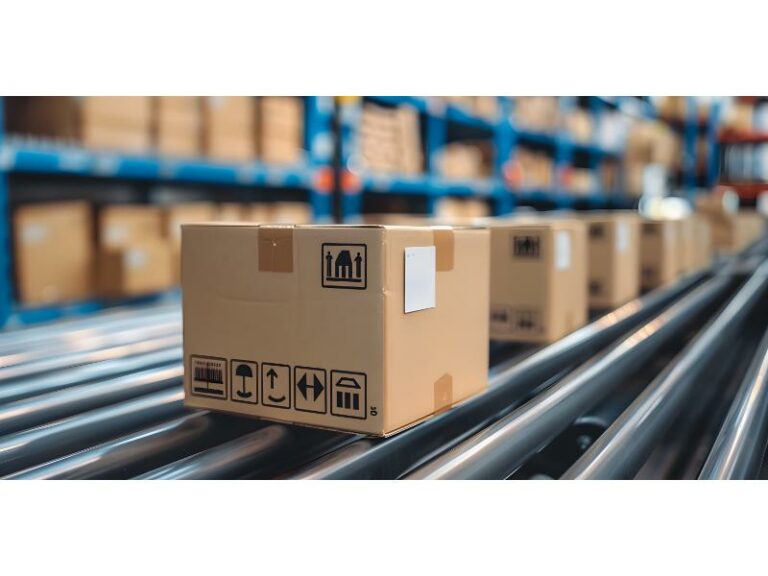Lowering Carbon, Lowering Costs: How Industrial Manufacturing Can Optimize for ESG
Introduction
In today’s industrial landscape, ESG (Environmental, Social, and Governance) practices are no longer a secondary concern—they are central to operational strategy and financial resilience. For industrial manufacturers, embedding ESG practices, particularly around Scope 3 emissions, provides a dual benefit of regulatory compliance and cost savings. Scope 3 emissions, encompassing all indirect emissions from activities like material extraction, transportation, and supplier operations, often constitute the majority of an industrial manufacturer’s carbon footprint. These emissions are notoriously difficult to track and control, as they require collaboration across multiple tiers of suppliers and partners. However, focusing on optimizing transportation, energy consumption, and supplier relationships offers manufacturers a practical pathway to achieve both sustainability and economic benefits. This article explores how ESG-driven optimization can help industrial manufacturers lower their carbon footprint and enhance efficiency, positioning them as leaders in sustainable business.
Understanding the Role of Scope 3 Emission Reductions in Cost Savings
Scope 3 emissions represent the most challenging aspect of ESG compliance due to their indirect nature and extensive impact. Unlike Scope 1 (direct emissions from owned sources) and Scope 2 (indirect emissions from purchased electricity), Scope 3 emissions require manufacturers to engage deeply with external partners, ensuring that every part of the supply chain aligns with ESG goals. According to the 2024 Supply Chain Trends and Attitudes Report, over 70% of companies are now investing in digital tools and systems that enhance visibility across their supply chains, a critical step in reducing Scope 3 emissions effectively (SPARQ360, 2024). Manufacturers are working with suppliers to measure, report, and reduce emissions at each stage of the product lifecycle, from raw material extraction to end-user delivery.
Incorporating Scope 3 emission reduction practices has significant cost benefits as well. By enhancing resource efficiency and encouraging suppliers to adopt sustainable practices, manufacturers can mitigate risks related to regulatory fines, supply chain disruptions, and reputational damage. Studies from Maersk show that manufacturers who have implemented supplier collaboration programs focused on emissions reduction and efficiency have achieved not only compliance but also reductions in energy costs, which directly impact profitability (Maersk, 2024). Enhanced visibility and traceability across the supply chain also enable manufacturers to identify areas for improvement, such as waste reduction, energy efficiency, and transportation logistics optimization, all of which contribute to both ESG goals and operational savings.
Transportation Optimization: Cutting Emissions and Costs
Transportation accounts for a considerable portion of Scope 3 emissions for manufacturers with intricate global supply chains. Optimizing logistics through data-driven decision-making has become a popular strategy, with many companies investing in digital tools that offer real-time data on fuel consumption, emissions, and route efficiency. The 2024 Supply Chain Trends and Attitudes Report notes that sustainable transportation practices, such as route optimization and fleet efficiency improvements, have become a priority for companies aiming to achieve both ESG compliance and cost savings. By consolidating shipments, utilizing energy-efficient fleets, and partnering with logistics providers that specialize in low-emission transportation, companies can reduce emissions substantially while also achieving lower operational costs (SPARQ360, 2024).
A key example of this practice in action is demonstrated by companies that have adopted predictive analytics to improve fuel efficiency and reduce idling times. These efforts are complemented by investments in alternative fuel vehicles and electrification of transport fleets, which, although initially expensive, pay off in long-term fuel savings and reduced carbon footprints. Supply Chain Brain reports that manufacturers leveraging these practices have seen notable declines in fuel-related costs, even while maintaining stringent emissions reduction targets (Supply Chain Brain, 2024). Furthermore, companies integrating digital tracking for emissions reporting find it easier to meet regulatory requirements and demonstrate accountability, which is increasingly valuable in securing investor confidence.
Enhancing Energy Efficiency Through Supplier Collaboration
Energy efficiency is another crucial area where industrial manufacturers can reduce both emissions and costs. By collaborating with suppliers who are committed to reducing energy consumption, manufacturers can lower their Scope 3 emissions and simultaneously achieve operational savings. Initiatives such as the U.S. Department of Energy’s Better Plants Program provide valuable resources and incentives to help manufacturers optimize energy use across the supply chain. This program encourages manufacturers to set ambitious energy reduction targets, track progress, and adopt best practices that drive both cost efficiency and ESG compliance (U.S. Department of Energy, n.d.).
Supplier selection plays an essential role in enhancing energy efficiency across the supply chain. Partnering with suppliers who prioritize renewable energy and invest in efficient production processes can help manufacturers make significant strides in achieving their ESG goals. For instance, manufacturers might work with suppliers to upgrade equipment, optimize manufacturing processes, and implement waste heat recovery systems, which reduce energy usage and associated costs. Integrity Next highlights that such collaborations not only help manufacturers reduce Scope 3 emissions but also foster innovation, as suppliers are incentivized to explore new, more efficient technologies (Integrity Next, 2024). These partnerships benefit all parties, creating a win-win scenario where environmental and economic goals are mutually reinforced.
Building Strong Supplier Relationships for Lasting ESG Success
Long-term ESG success in industrial manufacturing relies heavily on strong supplier relationships that prioritize transparency, accountability, and shared goals. As industrial manufacturers set ambitious targets for reducing Scope 3 emissions, close collaboration with suppliers becomes essential for tracking and managing environmental impacts effectively. The 2024 Supply Chain Trends and Attitudes Report shows that over 65% of companies are focusing on supplier relationships as a means of improving ESG performance, recognizing that establishing mutual sustainability standards is key to compliance and cost savings (SPARQ360, 2024).
A robust supplier management strategy involves establishing clear sustainability metrics and incentives for continuous improvement. As noted by Maersk, companies that work with suppliers on standardized metrics, like those provided by the Global Reporting Initiative (GRI), can better align their ESG strategies with operational performance. Such alignment ensures that all parties in the supply chain are held to consistent standards, minimizing discrepancies and fostering a unified approach to sustainability (Maersk, 2024). These collaborative efforts enhance resilience across the supply chain, making it more adaptable to environmental, regulatory, and market changes while simultaneously reducing risks associated with supply chain disruptions and compliance breaches.
Conclusion
For industrial manufacturers, aligning ESG goals with cost-saving strategies is essential in today’s increasingly regulated and sustainability-focused market. By addressing Scope 3 emissions through optimized transportation, energy efficiency, and close supplier collaboration, manufacturers can reduce their environmental footprint and achieve substantial operational savings. These efforts, supported by insights from the 2024 Supply Chain Trends and Attitudes Report, underscore the value of integrating sustainability into core business practices. As ESG pressures mount, companies that proactively pursue sustainable supply chain practices will not only comply with regulations but also gain a competitive edge, ensuring long-term value for stakeholders and contributing to a more sustainable industrial sector.
References
Integrity Next. (2024). Supply chain transparency as a key linchpin for ESG compliance. Retrieved from https://www.integritynext.com/supply-chain-transparency-esg-compliance
Maersk. (2024). Opportunities and challenges in integrating sustainability into supply chains. Retrieved from https://www.maersk.com/news/articles/2024/10/27/sustainability-in-fmcg-supply-chains
SPARQ360. (2024). 2024 Supply Chain Trends and Attitudes Report. Retrieved from https://sparq360.com/trendsandattitudes
Supply Chain Brain. (2024). 2024 Supply Chain ESG Guide: Overcoming top challenges for sustainable supply chains. Retrieved from https://www.supplychainbrain.com/articles/2024-05-06-2024-supply-chain-esg-guide
U.S. Department of Energy. (n.d.). Better Plants Program: Supporting industrial energy efficiency initiatives. Retrieved from https://betterbuildingssolutioncenter.energy.gov/better-plants






